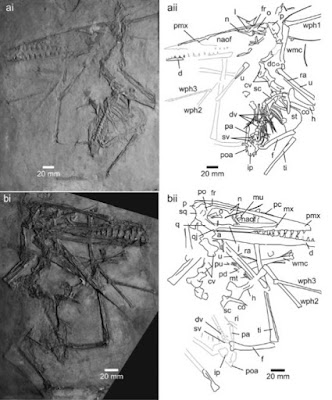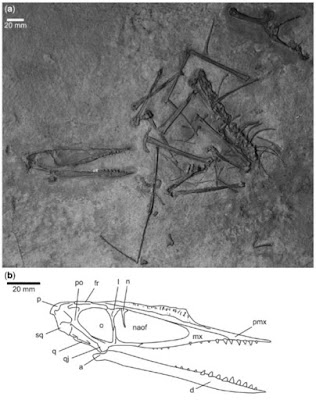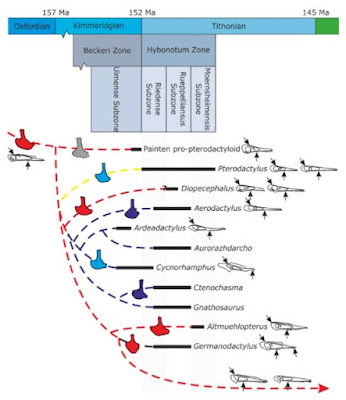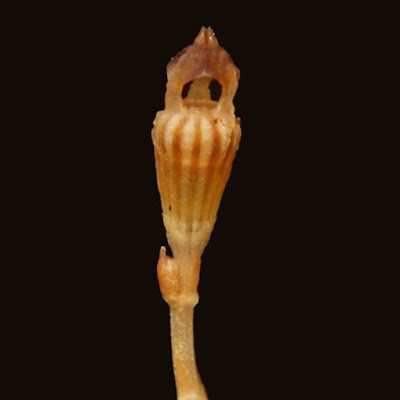[Most Recent Entries] [Calendar View]
Saturday, July 22nd, 2017
| Time | Event | ||||
| 3:13p | [Paleontology • 2017] The Taxonomy and Phylogeny of Diopecephalus kochi (Wagner, 1837) and ‘Germanodactylus rhamphastinus’ (Wagner, 1851) The Solnhofen pterosaurs Pterodactylus antiquus, Aerodactylus scolopaciceps, Diopecephalus kochi, Germanodactylus cristatus and Germanodactylus rhamphastinus all have complicated taxonomic histories. Species originally placed in the genus Pterodactylus, such as Aerodactylus scolopaciceps, Ardeadactylus longicollum, Cycnorhamphus suevicus and Germanodactylus cristatus possess apomorphies not observed in the type species of Pterodactylus, and consequently have been placed in new genera. The affinities of another Solnhofen pterosaur previously placed in Pterodactylus, Diopecephalus kochi, are less clear. It has been proposed that D. kochi is a juvenile specimen of Pterodactylus antiquus, or perhaps ‘Germanodactylus rhamphastinus’ specimens are mature examples of D. kochi. Furthermore, studies have suggested that ‘Germanodactylus rhamphastinus’ is not congeneric with the type species of Germanodactylus. Geometric morphometric analysis of prepubes and a cladistic analysis of the Pterosauria elucidate plesiomorphic and apomorphic conditions for basal Jurassic pterodactyloids. Germanodactylus is found to be a monotypic genus and Pterodactylus, Diopecephalus, and ‘G. rhamphastinus’ are found as distinct taxa belonging in individual genera, diagnosable using a combination of characters. Thus, Diopecephalus kochi is not demonstrated to be congeneric with Germanodactylus or Pterodactylus and is maintained as a valid taxon. ‘G. rhamphastinus’ is readily distinguishable from other Solnhofen pterosaur taxa, and a new genus is erected for its reception. ...... Altmuehlopterus gen. nov. Derivation of name. ‘Altmuehl’ refers to the Altmühl river that flows through Solnhofen (close to Mörnsheim), Eichstätt and joins the river Danube at Kelheim. ‘Pterus’ is a common suffix in pterosaur names referring to the wing. This name is presented as an alternative to the geographically significant name Daitingopterus (Maisch et al., 2004) which is a nomen nudum. Type species: Altmuehlopterus rhamphastinus(Wagner, 1851)
Steven U. Vidovic and David M. Martill. 2017. The Taxonomy and Phylogeny of Diopecephalus kochi (Wagner, 1837) and ‘Germanodactylus rhamphastinus’ (Wagner, 1851). Geological Society, London. Special Publications. (2017); SP455.12. DOI: 10.1144/SP455.12 | ||||
| 3:24p | [Ichthyology • 2017] Sex-specific Evolution during the Diversification of Live-bearing Fishes Abstract Natural selection is often assumed to drive parallel functional diversification of the sexes. But males and females exhibit fundamental differences in their biology, and it remains largely unknown how sex differences affect macroevolutionary patterns. On microevolutionary scales, we understand how natural and sexual selection interact to give rise to sex-specific evolution during phenotypic diversification and speciation. Here we show that ignoring sex-specific patterns of functional trait evolution misrepresents the macroevolutionary adaptive landscape and evolutionary rates for 112 species of live-bearing fishes (Poeciliidae). Males and females of the same species evolve in different adaptive landscapes. Major axes of female morphology were correlated with environmental variables but not reproductive investment, while male morphological variation was primarily associated with sexual selection. Despite the importance of both natural and sexual selection in shaping sex-specific phenotypic diversification, species diversification was overwhelmingly associated with ecological divergence. Hence, the inter-predictability of mechanisms of phenotypic and species diversification may be limited in many systems. These results underscore the importance of explicitly addressing sex-specific diversification in empirical and theoretical frameworks of evolutionary radiations to elucidate the roles of different sources of selection and constraint. Conclusions Some of our most basic tenets and enduring theories of evolution have come from systems in which phenotypes or species have diversified in response to putatively clear and strong sources of selection. However, even in those systems, evolutionary dynamics are more complex than previously assumed. Compartmentalizing our understanding of diversification into male or female (or, worse yet, sex averages), natural or sexual selection, phenotypic or species patterns, and micro- or macroevolution provides an incomplete assessment of evolutionary patterns and processes. Only integrative analysis of evolutionary dynamics across these areas will allow us to develop robust understanding of the origins of biodiversity. Zachary W. Culumber and Michael Tobler. 2017. Sex-specific Evolution during the Diversification of Live-bearing Fishes. Nature Ecology & Evolution. DOI: 10.1038/s41559-017-0233-4 A tale of two fishes: Biologists find male, female live-bearing fish evolve differently phy.so/419594245 via @physorg_com 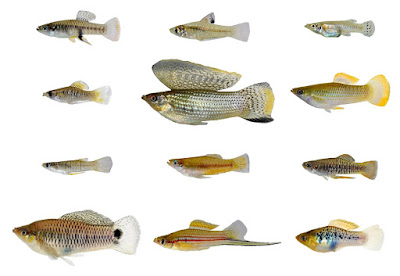 | ||||
| 4:35p | [Botany • 2017] Thismia brunneomitroides • A New Mycoheterotrophic Species (Thismiaceae) from southern Thailand
Abstract Here we describe a new species of the mycoheterotrophic genus Thismia (Thismiaceae), Thismia brunneomitroides, discovered during a botanical survey in Khao Luang National Park, Peninsular Thailand. Thismia brunneomitroides resembles Thismia brunneomitra from Brunei Darussalam in that both species possess inner tepal lobes that are connate to form a mitre with three projections at the apex and large lateral appendage of the connective. However, it differs in having ivory flowers with twelve pale orange to brownish orange vertical stripes on the perianth tube and slightly dentate lateral appendage of the connective which does not exceed apical part of the connective. Descriptions, illustrations and a key to the 13 species of Thismia in the Thai-Malay Peninsula are provided. Keywords: mycoheterotrophy, taxonomy, Sarcosiphon, Monocots
Thismia brunneomitroides Suetsugu & Tsukaya, sp. nov. Type:—THAILAND, Nakhon Si Thammarat Province, Khao Luang National Park, along trail to Kung Ching Waterfall, in lowland evergreen forest, elev. 285 m, 15 December 2015, Tagane S., Toyama H., Nagamasu H., Rueangruea S., Hemrat, C., Keiwbang W. T4968 (holotype BKF!–a spirit collection, isotype TNS!–a spirit collection). Diagnostic characters:—Thismia brunneomitroides is most similar to Thismia brunneomitra Hroneš, Kobrlová & Dančák (2015: 173) from Brunei Darussalam in having inner tepal lobes connate to form a mitre with three projections at the apex and large lateral appendage of the connective. However, it differs from T. brunneomitra in having ivory flowers with twelve pale orange to brownish orange vertical stripes on the perianth tube (vs. brown to blackish flowers with twelve darker vertical stripes on the perianth tube) and slightly dentate lateral appendage of the connective which does not exceed apical part of the connective (vs. entire lateral appendage of the connective which exceeds whole apical part of the connective). Etymology:—The new species is named after the great morphological similarity to T. brunneomitra. Habitat and Ecology:—Less than 10 individuals were found in shaded understory of lowland evergreen forest. No other mycoheterotrophic species were found in the locations in which the new Thismia were collected. . Kenji Suetsugu, Hirokazu Tsukaya, Shuichiro Tagane, Somran Suddee, Sukid Rueangruea and Tetsukazu Yahara. 2017. Thismia brunneomitroides (Thismiaceae), A New Mycoheterotrophic Species from southern Thailand. Phytotaxa. 314(1); 103–109. DOI: 10.11646/phytotaxa.314.1.9 |
| << Previous Day |
2017/07/22 [Calendar] |
Next Day >> |
